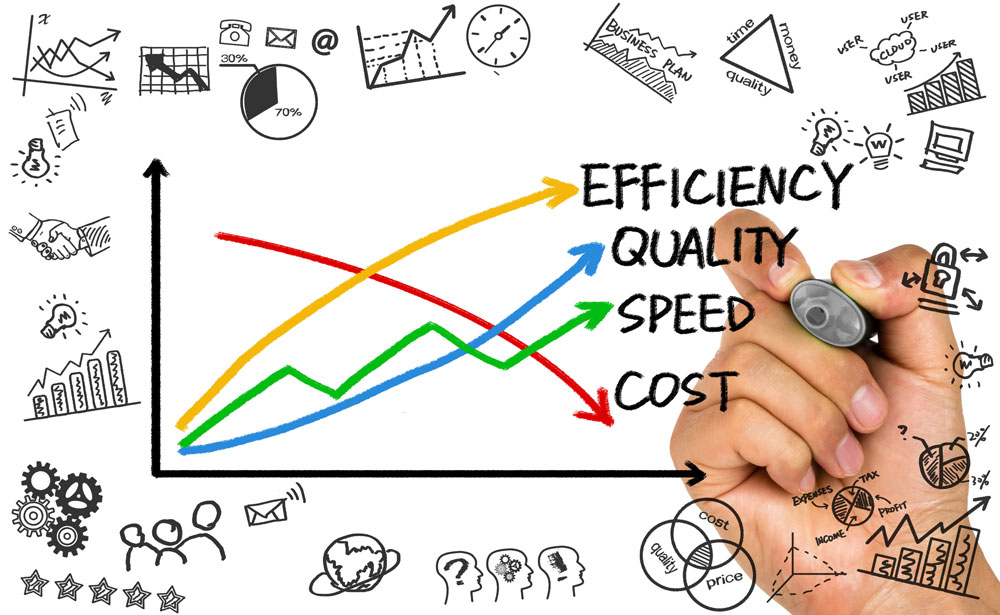
If you’re a Factory or Manufacturing Manager, then you will know just how important it is to Reduce Manufacturing Costs to enable you to Boost the Profitability of Your Company.
You will no doubt be very familiar with the usual methods of reducing manufacturing costs such as;
- Buying cheaper to reduce raw material costs
- Making cuts to lower overhead expenses
- Increasing efficiency in your production process to increase throughput
Whilst these are all good starting points for reducing your manufacturing costs, there are also other, perhaps more hidden ways that costs can be reduced. One of these methods is investment in the right type of automation.
Below, we’ve explored three different ways that automation can be used to reduce manufacturing costs.
- Bespoke Automation
The problem often experienced by manufactures is that standard machinery doesn’t always meet their specific requirements. Standard machinery often only performs some, not all of the tasks needed, resulting in multiple machines having to be used. This then increases the production time required and manufacturing costs as parts have to be transferred between machines for different processes.
This is where bespoke automation can be used to reduce your manufacturing costs. A bespoke automation solution that is tailor made to suit your requirements can be designed to perform multiple functions with one machine. Bespoke machinery therefore reduces the need to transfer parts between machines, improves production speeds and reduces wasted time and costs.
- Production Monitoring and Data Logging Systems
Production monitoring and data logging systems are rapidly becoming recognised around the world for their vast benefits, such as:
- Reduced downtime – downtime can have a negative effect on your productivity and therefore your manufacturing costs. By having instant fault reporting from production monitoring you decrease your downtime, ensuring your factory is working efficiently all of the time.
- Accurate efficiency monitoring – Decreased efficiency leads to lower production levels and higher costs. By keeping a close eye on your factory’s efficiency, you can quickly see areas within your production process that are bottlenecks and not producing as efficiently as they should be. This then enables you to make the necessary changes to your process to increase efficiency and thereby reduce costs.
- Increased accuracy/repeatability of products – this is essential for busy manufacturing businesses who are looking to produce large amounts of identical products. Less defects means less quality control issues which in turn reduces manufacturing costs.
By keeping your manufacturing processes efficient and accurate, you can lower your production costs whilst boosting productivity. The data provided by production monitoring and data logging systems gives you the necessary information to enable you as a manager to improve the performance of your factory. By making improvements, you are then able to drive further growth.
- Vision and Inspection Systems
Vision and inspection systems are part of an ever-evolving technology. Tasks that were once impossible to automate can now be highly automated. Not only that, but production speeds can be dramatically increased. Vision inspection systems are able to quality check products at high speeds which means that there is no need to stop your production process to carry out quality control checks. This then increases throughput and reduces manufacturing costs. Some other key benefits of vision inspection systems are:
- They are a very cost-effective way of implementing quality assurance and control
- They are able to work at very high speeds and with stringent accuracy requirements
- Vision inspection is a very simple way to boost the competitive edge of your company to drive further growth
Whilst these are the three more common ways automation can be used to reduce your manufacturing costs, it is by no means limited to this. Automation enables you to remove the ‘hidden’ manufacturing costs such as product recalls, idle machine time, high labour costs, and wasted time in product transfers. As production processes are so varied there may be other types of automation that are more appropriate to you. Robotic palletising is also another way of reducing your manufacturing costs.







